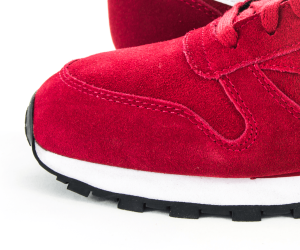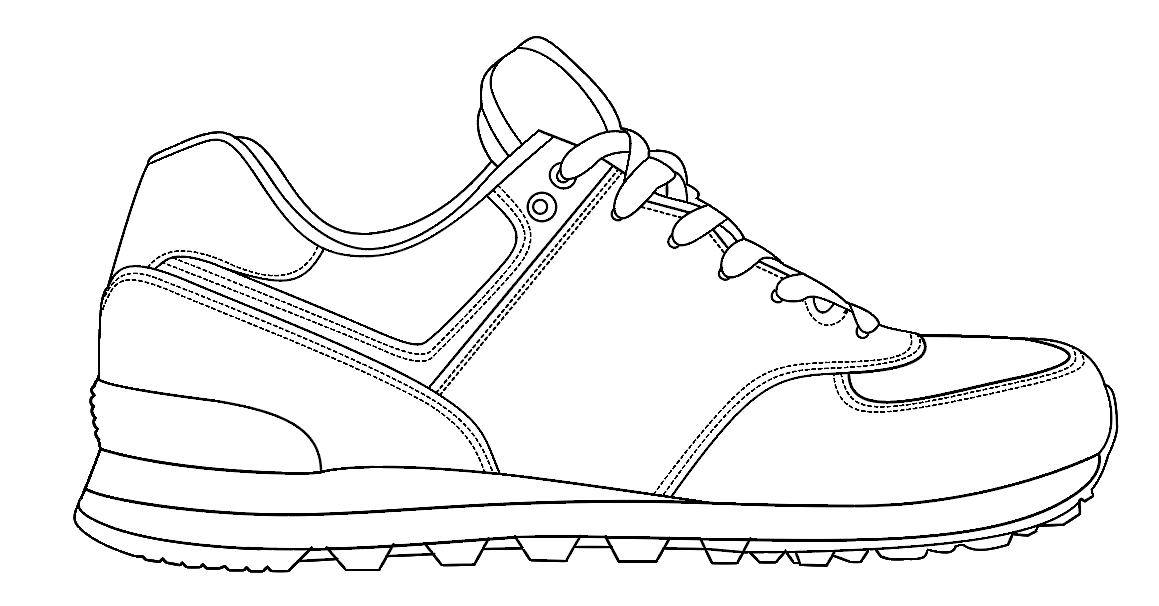How New Balance Shoes are Made
How New Balance Makes Shoes
What is the Process of Making New Balance Classic Shoes? Most New Balance shoes are made by Cold Cement Construction process. The New Balance classic trainer styles have a Sheet Cut EVA midsole. This Midsole is attached by the Cold cement process. Cold cement is the modern updated style of shoe construction. Cold cement is the opposite of the classic high heat vulcanized shoe construction, as found in Vans and Converse shoes.
Cold Cement shoe construction allows the use of modern lightweight plastic, foam and mesh materials due to the low temperatures required for bonding the upper to the shoe sole. Every modern high performance athletic shoe manufactured by New Balance for Running, Basketball etc… is made by this cold cement process.
 Cold Cement / Sheet CUT EVA Shoe Assembly Process:
Cold Cement / Sheet CUT EVA Shoe Assembly Process:
New Balance Classic with a sheet cut EVA Midsole the shoe upper must be prepared by board lasting. For this running shoe the outsole will not cover the edge upper so it must be tucked under. This is called “board lasting”. The lasting board is made of treated fabric or paper board.
The shoe upper is steamed to soften the materials and the last is inserted and pulled tight. A lasting machine is used to pull the upper tight. The Lasting machine pulls the upper tight, while securely bonding the upper to the lasting board. The lasting board remain inside the shoe, you can see it under the footbed.
The shoe may have a plastic or fabric part installed on top of the tongue to protect the surface from damage and drift during the lasting operations.

While the upper is being lasted the sole unit being prepared. In this case a the rubber sheet sole is combined with the EVA foam cushioning component cemented to the underside. This is done in a separate process that’s called stock fitting.
The sheet cut EVA material is cut into a profile then machined to follow the outside bottom shape. A shaped grinding stone buffs the edge profile.
Now that the upper is lasted tightly and the outside unit is compete, the two pieces come together. The rubber sole unit will receive a coating of primer and cement. The outsole will get it’s own special primer designed for EVA and rubber. The shoe upper is also prepared with its own special primer and cement.
After the contact cement and primer has been completely dried in the heating tunnels the two pieces are joined together by hand. The skilled worked aligns the upper and outsole together then places the shoe is a hydraulic press.
 The toe tip will get extra pressing[/caption]
The toe tip will get extra pressing[/caption]
The shoe will have some pressing operations, usually all done with one machine. A vertical press, toe and heel press and Side presses. This insures there is full contact between the upper and outsole. Once the shoe is pressed together it’s often put in the cooling tunnel to set the glue.
After the cooling tunnel a shoe de-lasting machine is used to push the last out of the shoe without wrinkling the upper.
Now the sneaker is complete at this point you can insert the foot bed. The footbed may be molded EVA with a fabric cover or flat sheet cut foam. The flat die-cut footed is usually cemented inside the shoe, while molded footbeds are most often removable.
The new sneaker is ready for a final QC inspection, a quick check for any loose threads, cleaning and packing.

